How is the face plasmolifting procedure carried out?

With age, human skin changes, its condition worsens. The speed of this process depends on many factors, ranging from health, and ending with the ecology of the environment. The most noticeable changes that occur on the face. Some people experience dryness, puffiness, contour lines lose their clarity. Modern medicine offers several ways to rejuvenate and restore facial skin, one of which is plasma-lifting technology.


What it is?
Plasma therapy or plasmolifting of the face is an injection procedure designed to improve the condition of the skin by “restarting” metabolic mechanisms.
For these purposes, plasma is used, isolated from the patient's own blood and enriched with platelets. Plasma rejuvenation occurs by subcutaneous injection into problem areas.
Platelets perform a hemostatic function in the body, are responsible for the processes of blood clotting. From the point of view of plasma therapy, these microparticles are interesting for their high content of hormones, proteins and growth factors.

Platelets have the following actions:
- stimulate cell division;
- activate the growth of blood vessels;
- saturate the skin with oxygen;
- normalize water balance;
- restart the mechanism of intercellular metabolism;
- accelerate the synthesis of collagen, hyaluron and elastin.

The action of enzymes, hormones and vitamins does not cause side effects, since there are no components foreign to the body in such plasma. As a result, skin regeneration occurs gently, increasing the rate of wound healing and recovery processes. The face regains youth, firmness and clear contours.
The effect is achieved due to the fact that after the injection, the body perceives the injection as an injury and creates fibrin networks in this place, which in turn accelerate the division of skin cells. The increased growth rate forces the fibroblasts to produce collagen.
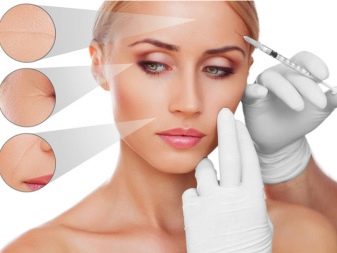

Medical institutions use different equipment and drugs for plasma lifting.
However, there are a few must-haves.
- A centrifuge for separating blood into fractions, usually at a speed of about 5 thousand rpm.
- Heat-resistant glass test tubes.
- Anticoagulant gel ("Heparin", "Fraxiparine") is injected into the test tubes before taking blood. It is necessary to preserve the structure of the plasma for the entire duration of the session.
- Thin injection needles are obliquely cut and are usually coated with silicone, which reduces the pain of the session. All needles must be disposable.


Indications
In clinical aesthetic practice, plasma lifting is popular in many areas.
There is a whole list of indications for which this procedure is applied.
- Orthopedics. Improvement of the condition with arthrosis, osteochondrosis, muscle pain and spasms.
- Gynecology for diseases and erosions of the cervix.
- Urology (cystitis, inflammatory processes of the urinary system).
- Dentistry. Accelerates tissue regeneration, improves implant survival, pain relief.
- Trichology. The therapy is indicated for hair loss.
- Rejuvenation in combination with other techniques.
- Traumatology. Rehabilitation after injuries and plastic surgery.
- Acne treatment.
- Post-acne treatment.
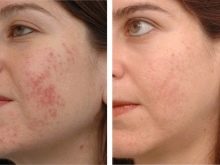

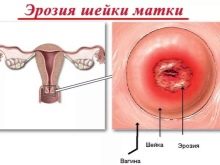
If the factors mentioned below are present, you can also refer to a similar procedure.
- Aging-related deterioration of the skin. These include expression lines and wrinkles, loose skin, reduced elasticity, distortion of facial contours.
- A gray or yellowish complexion associated with intoxication or metabolic disorders - for example, with excessive smoking and eating junk food.
- The presence of consequences after injuries (scars, scars and stretch marks).
- Acne, blackheads, and other irregularities.
- Elastosis, which is characterized by a decrease in elasticity due to changes in the fibers of the connective tissues.
- Couperosis (presence of capillary nets and cobwebs).
- Various skin diseases (dermatitis, eczema).
- Dark spots.



In addition, a course of plasma therapy often gives positive results in the following cases:
- if the skin has been damaged as a result of chemical or laser peeling;
- the skin is dry due to prolonged exposure to the sun or frequent visits to the solarium;
- the condition of the face is disturbed by unsuccessful injection procedures, for example, botulinum toxin;
- in the presence of deformities after operations;
- in case of sagging skin after significant weight loss.


It should be noted that the greatest cosmetic effect can be achieved only if plasmolifting is combined with other technologies.
Contraindications
Since plasma therapy is one of the methods of treatment, it, like any other method, has contraindications. Moreover, they can be both temporary, because of which the procedure is possible in the presence of certain factors, and permanent, which completely exclude the possibility of such treatment.

It is categorically impossible to do the procedure if you have the following diseases.
- Viral diseases, including hepatitis. During the subcutaneous injection of platelet plasma, new stem cells are rapidly formed, which can complicate the patient's disease.
- Oncology and predisposition to it.
- Diseases of the immune system.
- Diseases of the blood. Since the procedure uses the patient's blood, any violations of it can lead to irreversible consequences.
- Taking blood thinning drugs.
- Chronic pathologies of the liver, kidneys and other internal organs.
- Diabetes.
- Epilepsy.
- Mental disorders, alcohol and drug addiction.
- Herpes. It is necessary to warn the doctor about its presence.



There are also cases in which the procedure must be postponed for some time.
- Pregnancy and lactation. Due to the fact that the effect of plasma on the body is poorly understood, there is no indication of how the procedure will affect the health of the baby. Therefore, it is better to postpone plasma therapy, and, if necessary, carry out it after the birth of the child.
- Menstrual period. Blood loss worsens the quality of plasma, reduces the degree of saturation with platelets, since the body is busy replenishing the lost elements. If a session is carried out at this time, it will be ineffective and can lead to bruising and swelling at the injection sites.
- Inflammation of the skin.
- Taking non-steroidal drugs and corticosteroids.
- Deficiency of hemoglobin in the blood.
- Low platelet count.
- Various non-chronic diseases.
- Minor age.


It is worth noting the factors in which the procedure is not effective.
In these cases, the result will be either very weak or not at all:
- the presence of complex wrinkles;
- a significant decrease in the elasticity and firmness of the skin;
- age-related pigmentation;
- severe ptosis (drooping of the eyelid).
It is necessary to make informed decisions, consider all the consequences. Even if the cosmetologists did not find anything against the procedure, it is necessary to realistically assess the expected effect so that later you do not regret the money spent.


Preparation
To begin with, you need to prepare psychologically for the procedure. Read the technology, reviews of doctors and patients.
The next important step is the delivery of tests. A laboratory examination will help check for contraindications.
The following research needs to be done:
- tests for the hepatitis virus and AIDS;
- determination of markers for other viral infections;
- blood chemistry;
- detailed general blood test;

To obtain highly accurate results, it is necessary to stop taking any medications 4 days before the session. It is recommended not to eat fatty foods and foods with preservatives within 24 hours. 4 hours before donating blood, do not eat, only drink clean water.
After receiving the results, a specialist consultation is required. If the cosmetologist, based on the analysis of the data obtained after the examination, approves the procedure, then you can proceed to the next stage - plasma therapy.

If the specialist allowed plasma lifting and set a date, then you should prepare in advance.
To do this, the following requirements must be met:
- in two days, increase the amount of water in the diet to 2 liters;
- do not take anticoagulant drugs such as "Aspirin" or "Heparin" for three days;
- four days before the procedure, you need to stop drinking alcohol;
- the night before, one should not indulge in gluttony; it is better to refuse fatty and smoked foods.
It should be remembered that after a session for about five days, it is impossible for the face to sunbathe, be in the cold or be exposed to the winds. Therefore, it is better to foresee in advance the possibility of being in the room for the entire recovery period.


How is the procedure going?
Morning treatments are recommended as blood sampling is done on an empty stomach.
The session should be carried out only in the clinic by qualified specialists, using special certified equipment.

Stage 1. Taking blood from a vein and processing it
Blood up to 100 ml is taken from the patient using a thin needle and placed in a special tube with a preservative. Then it is placed in a centrifuge and dispersed for 15 minutes.
When rotating, the blood is divided into fractions:
- plasma with the lowest platelet count;
- platelet-rich plasma;
- erythrocentric and leukocyte masses.


Plasma with platelets and fibrin is separated from another mass using a syringe. She is ready for injection.
Some cosmetologists propose to additionally enrich the plasma with microelements and vitamin complexes, add so-called mesotherapeutic preparations. But there are also opponents of this approach, who believe that it is better to use pure plasma in plasma-lifting.

Stage 2. Antiseptic treatment of the face and anesthesia
During the operation of the centrifuge, the doctor performs antiseptic cleansing of the face.
Since the procedure is a little painful, an anesthetic cream is used.

Stage 3. Administration of injection
Plasma solution is injected subcutaneously into areas that require correction. The procedure is performed in compliance with the contour plastics scheme. As a rule, specialists use mesotherapy, when injections are performed subcutaneously every two square centimeters.
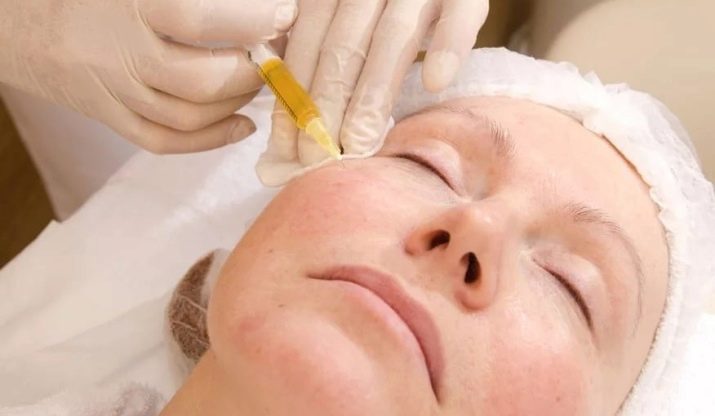
Stage 4. Post-treatment of the face with an antiseptic
You need to pay attention to the following factors.
- The session usually lasts from 20 minutes to 1 hour, depending on the area of the treated skin area.
- The procedure must be started immediately after the autoplasma is ready, because over time it thickens, becomes dense. With the introduction of a thickened substance, the risk of papules appears.
- To achieve the result, experts recommend carrying out plasmolifting courses. Usually after the first session, the effect is weak. The standard course consists of 4 procedures with intervals of 1 to 2 weeks.
- To prolong the effect of the procedure, experts advise to carry out supportive therapy. The number of sessions depends on the indications and wishes of the patient.

Stage 5. Recovery period
It is better to spend the recovery period at home, without exposing your face to chapping, sunburn and frost. If it is necessary to go out, then you need to treat your face with sunscreen with an SPF degree of over 30.
On the day of plasma therapy, it is recommended to exclude any cosmetic procedures. From the second day, it is allowed to use only mild soothing and moisturizing creams, as well as anti-inflammatory gels with regenerating properties and antioxidants. These include the Panthenol spray, Bepanten cream, Traumeel S ointments or Arnica compositum.
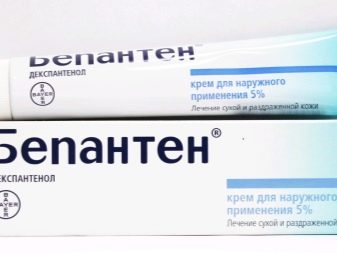
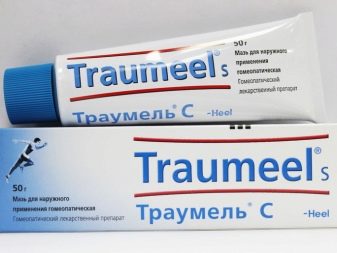
It is recommended to stop showering and washing your hair for about 12 hours.
Also, after the procedure, visiting the bathhouse, solarium, swimming pool, massage parlors and gyms is contraindicated for 3 days.
Lifting weights is contraindicated for about three days after the session.
To consolidate the positive effect, the entire recovery period must be followed by a regimen, exclude overstrain, stress, and give up bad habits.

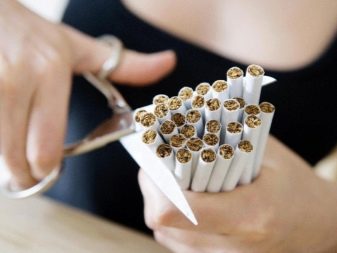
What is it combined with?
Cosmetologists warn that plasmolifting will achieve the desired results only if it is carried out simultaneously with other rejuvenation procedures.
Using fillers
Dermal fillers are indicated for correcting deep wrinkles and nasolabial folds, as well as when it is necessary to achieve additional volume in certain areas (cheekbones, cheeks, lips).
Fillers are injectable formulations based on five types:
- collagen;
- hyaluronic acid;
- poly-L-lactic acid;
- calcium hydroxyapatite;
- polymethyl methacrylate microspheres.

Laser treatments
The procedure uses a fractional laser to improve the texture of the skin. When choosing, it should be understood that fillers are designed to smooth out wrinkles and folds, and not improve the condition of the skin. Whereas the second method, on the contrary, will improve the appearance and increase elasticity, but will not lead to a decrease in wrinkles. You have to choose.

Swiss Plasmolifting
In plasma therapy according to the Swiss method, a complex effect is used - plasma and laser manipulations. This approach allows you to eliminate scars on the skin, post-acne or other similar defects. It is also recommended as a treatment for dry skin.
This is the point of using special filter tubes. As a result of centrifugation, autoplasma is obtained with an increased concentration of platelets and fibrin.
Cosmetologists assure that the effectiveness of the Swiss technology is higher than the usual course of plasma lifting. In addition, fewer treatments are required.


Rehabilitation therapy
Most often, plasma lifting is prescribed as a restorative technique after various types of deep peels - laser or chemical. After such sessions, the skin has many small cracks, notches or microburns. Plasmolifting shortens the rehabilitation period after any invasive methods of rejuvenation.

Side effects
Absolutely negative side effects after the plasmolifting procedure have not been identified, since, from a medical point of view, it is harmless.
However, the qualification of the specialist who conducts the session is of great importance. Infectious complications can manifest themselves only if they violate antiseptic rules when taking blood, treating the skin and administering injections.
The following factors can be listed as side effects:
- swelling and puffiness after the procedure;
- redness of the skin;
- hematomas and papules, which usually disappear within 10 days;
- acne rashes - but it's not scary, acne will go away in a few days.


To eliminate them, it is enough to provide the skin with proper care - the use of cold compresses and soft soothing creams.
Allergic reactions are sometimes possible, but they are individual. Since the patient's own blood is used as a drug, only third-party materials can provoke allergies.
These include the following types:
- anticoagulant gel with which the tubes are filled;
- antiseptic, which is used to treat wounds on the face after injections;
- anesthetic cream;
- materials from which the tools are made.

In case of more serious post-procedural consequences, it is necessary to urgently seek help from a doctor.
These include the following factors:
- significant change in blood pressure;
- exacerbation of chronic diseases;
- painful sensations;
- inflammation or suppuration of wounds at the injection sites.


Weigh the pros and cons
Proponents of the method claim that the procedure has much more positive than negative.
pros
- Safety associated with the use of the patient's own blood. The risk of rejection and incompatibility with the drug is reduced to zero.
- The possibility of combining with other anti-aging techniques: thermal and thread lifting, laser technologies, contour plastics.
- Reduction of the recovery period after deep peelings and laser resurfacing of the face.
- Saving the result for up to six years, which is not bad compared to other similar procedures.

Minuses
- To maintain the effect, regular courses are required.
- There are still side effects, they cannot be ignored.
- The optimal age category is under 40. After the specified bar, the effect will be minimal. To achieve significant results, it will be necessary to resort to additional procedures.
- Violation of technology can lead to negative consequences, for example, infection.
The procedure is characterized by a cumulative nature, that is, the effect increases over time as the active elements increase after intradermal injections. Therefore, multiple sessions are required. No addictive effect was noted, however, if the courses are not regularly repeated, the cells will return to their original state.

Expected effect of the procedure
Effects can be classified into two groups - biological and external.
Biological effects include:
- regeneration;
- increased skin immunity;
- revitalization - in other words, slowing down the aging process;
- stimulation of intracellular metabolism.

External effects include:
- reduction of wrinkles;
- moisturizing, reducing dryness;
- increased tone and elasticity;
- color improvement;
- elimination of dark circles and bags under the eyes;
- restoration of microdefects and healing of wounds, irritation, rash;
- elimination of pigmentation in certain areas;
- solution to the problem of acne;
- prevention of various skin diseases.


Professor Renat Akhmerov, who is the developer of plasma lifting, highlights a number of arguments in favor of his method:
- elimination of small wrinkles mesh;
- the acquisition of an even shade by the skin;
- active growth of stem cells;
- strengthening the immune system;
- oxygenation of the skin.
Among the shortcomings, the developer identifies the following factors:
- discomfort and pain during the injection;
- high price;
- negative reactions in violation of technology.

Comparison with procedures similar to plasma lifting
Biorevitalization
Biorevitalization - intradermal injection of anti-aging agents such as hyaluronic acid. This procedure prevents skin aging by forcing the body to additionally synthesize collagen production, which triggers the regeneration processes. The substance is safe, over time it independently disintegrates in the body without consequences.
Biorevitalization is of two types: injection and laser.
Indications and contraindications are similar to plasma therapy. As an exception, cosmetologists call disorders associated with blood clotting. If they are a contraindication for plasmolifting, then they are not for biorevitalization.


Unlike the plasma procedure, hyaluronic injections do not require additional preparation and long-term rehabilitation. However, allergy sufferers should give preference to plasma therapy, since their own blood excludes the occurrence of allergic reactions.
If we compare procedures in terms of cost, then biorevitalization is more expensive by an average of 2 thousand rubles.

Laser exposure
The laser technique consists in the complex application of therapy with diode radiation and low molecular weight hyaluronic acid. The greatest effect is achieved when using fragmented hyaluron, since its molecular size is small enough to penetrate the skin layers. To do this, a wavelength is selected on the laser system, due to which the bonds are reduced, and channels are opened in the epidermis through which hyaluronic acid is transported into the skin.
As a result, the mechanisms of reproduction of its own hyaluron, elastin and collagen are activated.

Mesotherapy
This procedure differs from the previous two in that it is able to stop the aging process of the skin. Its essence is in the intradermal injections of vitamin complexes, amino acids and microelements, the combinations of which are selected individually for each patient.
The course of mesotherapy allows you to eliminate age spots, vascular networks, wrinkles. This tightens the face contour and moisturizes the skin. The effect lasts longer, however, after the expiration of the period of action, rapid aging of cells begins, therefore it is necessary to conduct courses regularly.
For mesotherapy, pharmacological preparations are used, due to which a high degree of allergenicity is assigned to it.
Contraindications coincide with plasma therapy, but hypertension and the presence of an implanted pacemaker are added to them.
At a cost, the procedure is cheaper than plasma-lifting by an average of 4-5 thousand rubles.
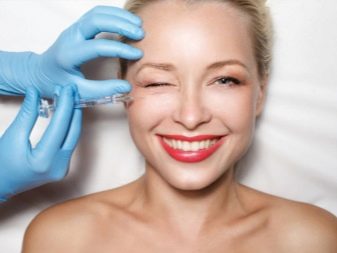

Ozone therapy
Ozone is a gas whose molecules are made up of three oxygen atoms. Therefore, the main property of ozone therapy is its saturation of cell tissue
The procedure is associated with the introduction of ozone into problem areas of the face. It stimulates intracellular metabolic processes, renews subcutaneous tissue. As a result, the skin is smoothed, the complexion improves. The technique is recommended as a remedy in the fight against scars and scars.
The methods of gas administration depend on the goal that the physician seeks to achieve using ozone therapy. They can be local or system. One of the local methods is small autohematotherapy, when blood is taken from the patient, saturated with ozone and injected back intravenously. It is most commonly used to treat herpes and furunculosis.
On average, the course consists of 10 to 12 procedures at daily intervals. A subcutaneous therapy session takes a few minutes. The effect of the course lasts up to a year.
Cosmetologists do not advise using mesotherapy and laser correction simultaneously with ozone therapy. Unlike plasma therapy, ozone rejuvenation is much cheaper, and the effect is almost comparable.

Botox injections
The procedure is one of the oldest in the cosmetic field. It is used for face contouring.
The materials used are preparations based on botulinum xin, which in its pure form is a poison that paralyzes muscles. For anti-aging injections, it is purified.
The main principle is muscle relaxation, which leads to lifting. The main disadvantage is immobilization of the areas treated with botox for a long time, which distorts facial expressions.
The effect lasts on average up to 6 months and it is impossible to eliminate it at this time. You can repeat the course 3 months after the expiration of the previous one.

Preparation for the procedure is similar to plasma therapy, with the exception of laboratory examinations. The entire session takes no more than 15 minutes.
Unlike plasma therapy, this technique uses intramuscular injections rather than subcutaneous injections.
Contraindications are almost the same as other anti-aging techniques.
The cost depends on the number of areas to be treated, but is comparable to plasma therapy.

Recommendations
In no case should one agree to home plasma therapy sessions, even if their cost is significantly lower than in the clinic. To conduct a session, you need sterility, special equipment, certified specialists. Centrifugation should take place on a special apparatus. All this can be obtained only in a licensed medical institution. It is better to check the reputation of the clinic in advance.
At the request of the client, cosmetology or medical institutions are required to submit the following documents:
- authorizing certificate for medical activities;
- a certificate confirming the possibility of plasma lifting;
- a license to work with blood products of the specialist who will carry out the procedure.
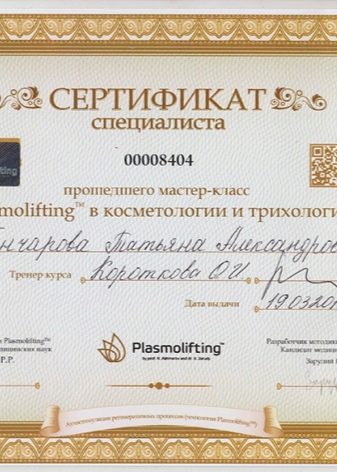

You should not be discouraged if the effect does not appear after a week, as results are most often found only after 10 or 14 days, and sometimes more.
It must be clearly understood that plasma lifting heals the skin, not rejuvenates it. The procedure triggers a defense reaction mechanism that leads to the production of new cells. At the same time, there is no question of any facelift.
The result after plasma lifting will last longer than two years, if you follow a healthy lifestyle - do not overeat, do not abuse alcohol and stop smoking.

Prices
Before agreeing to the plasmolifting procedure, you need to weigh your financial capabilities, since it is not cheap, and the course consists of several sessions.
The cost of services varies depending on the quality and quantity of consumables, the qualifications of specialists, and the number of sessions. The choice of method also influences the price - the enriched one is more expensive than the unenriched one. However, it must be borne in mind that it is also more effective.
On average, in the Moscow region and the central region of Russia, the cost of a full course of plasma therapy ranges from 10 to 25 thousand rubles. In some regions of the Urals and Siberia, it is slightly more expensive.
Many professional clinics with extensive experience and a client base accumulated over the years offer flexible discount systems. They can be accumulative in nature, provided in the form of special conditions for regular customers or one-time promotions. In any case, all the information must be learned in advance in order to choose the appropriate option in terms of the cost and quality of the services received.
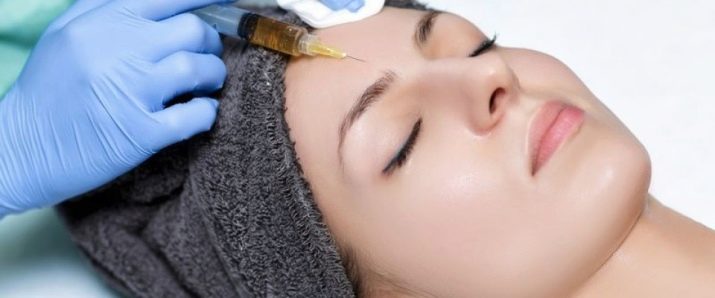
Reviews of doctors and patients
In most cases, doctors speak with caution about the plasma lifting procedure, since no serious clinical trials have been carried out, there are no references to scientific studies and published evidence.
The only publication on this topic was coverage of research carried out in a laboratory setting. During the test, they wanted to reveal the effectiveness of platelet-rich plasma in skin regeneration. Research has shown that autoplasma actually increases the number of fibroblasts, which activates collagen production. However, no numerical indicators are given, which raises doubts among specialists, and leads to the idea that the effect obtained is insignificant.
There is an opinion among doctors that plasmolifting is nothing more than a skillful marketing move in the cosmetology industry. There is no evidence to suggest that this anti-aging treatment is effective other than advertising and propaganda.

Many cosmetology clinics carry out plasma therapy sessions. As a rule, the effect of one procedure is not visible; several sessions need to be carried out. But even after the course has been completed, the patient may be dissatisfied with the result, since large defects will not go away. Plasma therapy improves skin condition rather than fighting deep wrinkles. A significant effect is achieved due to the complex application of several techniques, which increases the cost of cosmetology services.
Patients most often note that the skin after the session becomes better, more elastic and radiant. It should be said that usually cosmetologists offer it together with some other anti-aging technique, for example, the introduction of fillers. Thus, the client pays for two procedures, one of which is questionable.
The result is good, but the same can be obtained using only fillers.
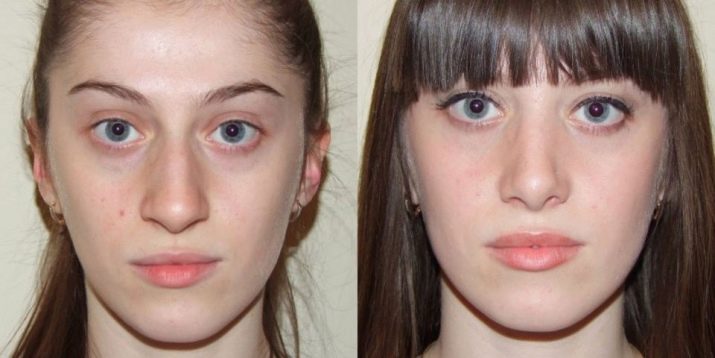
Summing up, we can clarify that plasma therapy is a relatively harmless and painless procedure aimed at improving the external condition of the facial skin. It triggers self-regeneration mechanisms, activates the synthesis of collagen and hyaluron. As a result, the face becomes cleaner, takes on a fresh look. But you should not expect a significant effect from plasma-lifting in terms of contouring or eliminating wrinkles. For these purposes, it is worth resorting to other anti-aging procedures or using them in parallel. It must be remembered that for patients over 40 years of age, plasma therapy is indicated only as an additional procedure that accelerates the processes of regeneration and recovery.
For information on how the plasmolifting procedure goes, see the next video.








